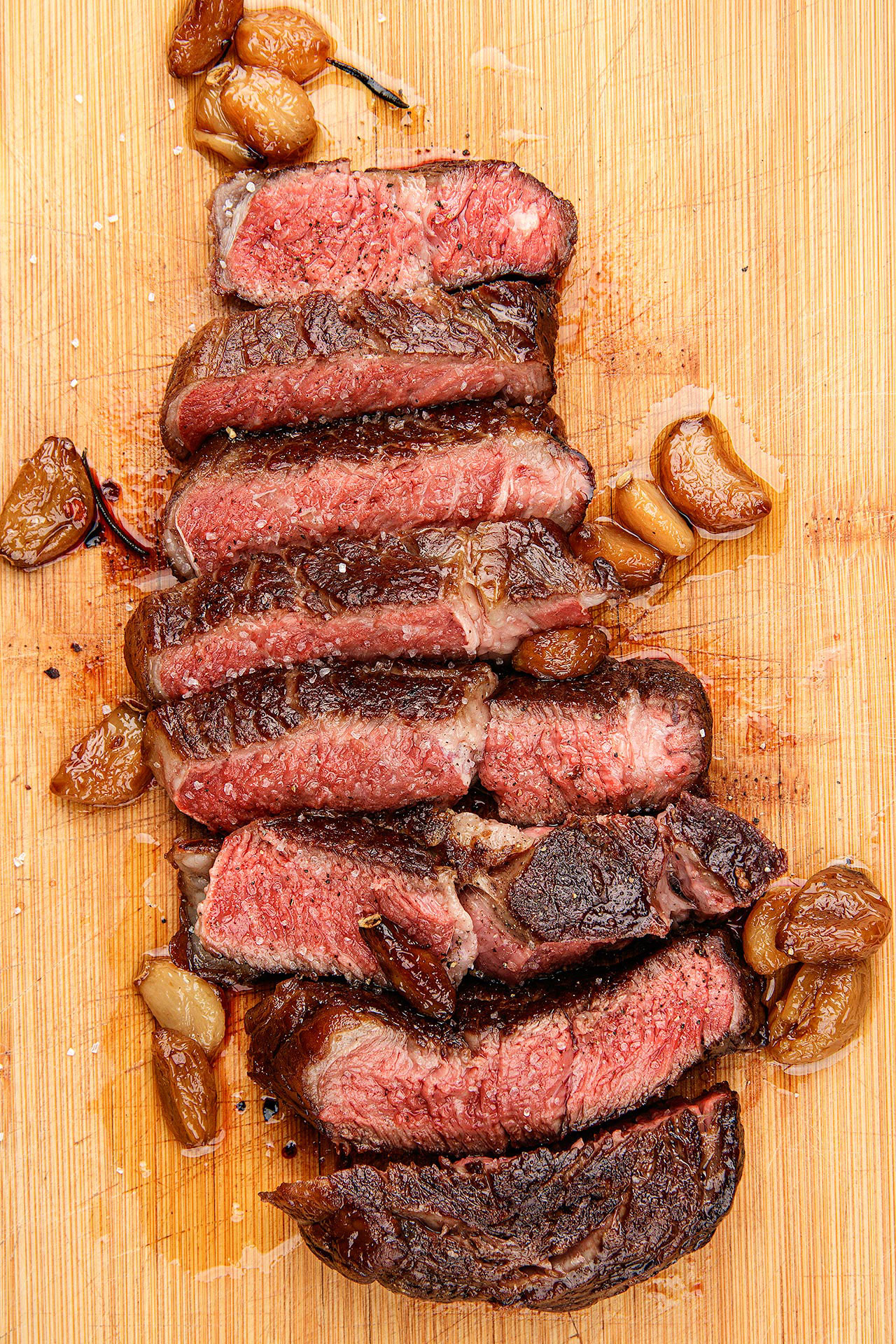
Understanding Steak Doneness Levels
Cooking a steak to the right level of doneness is often considered one of the most challenging aspects of steak preparation. While personal preference plays a significant role in choosing how well-done a steak should be, knowing the specific doneness levels can elevate one’s culinary skills.
What Are the Doneness Levels?
Steak doneness levels indicate how thoroughly the meat is cooked, affecting its texture, flavor, and juiciness. Here’s a breakdown of the most common levels:
- Rare (120°F – 125°F / 49°C – 52°C): Cool, red center; very tender and juicy. It has a soft texture, and the steak feels lightly seared on the exterior.
- Medium Rare (130°F – 135°F / 54°C – 57°C): Warm red center; firm but juicy. This level is often preferred by steak enthusiasts for its balanced flavor and texture.
- Medium (140°F – 145°F / 60°C – 63°C): Pink and firm, with a warm center. It offers a middle ground, providing more cooked texture while retaining some juiciness.
- Medium Well (150°F – 160°F / 65°C – 71°C): Slightly pink center; firmer and drier. This level is often chosen by those who prefer a more cooked steak.
- Well Done (160°F and above / 71°C and above): Fully cooked, with no pink. This steak is the firmest and tends to be the least juicy.
Understanding these doneness levels not only helps in achieving a perfectly cooked steak but also satisfies the palate of anyone dining. Remember, using an accurate meat thermometer is crucial when aiming for your favored doneness. After all, who wouldn’t want to bite into a steak that’s exactly the way they like it?
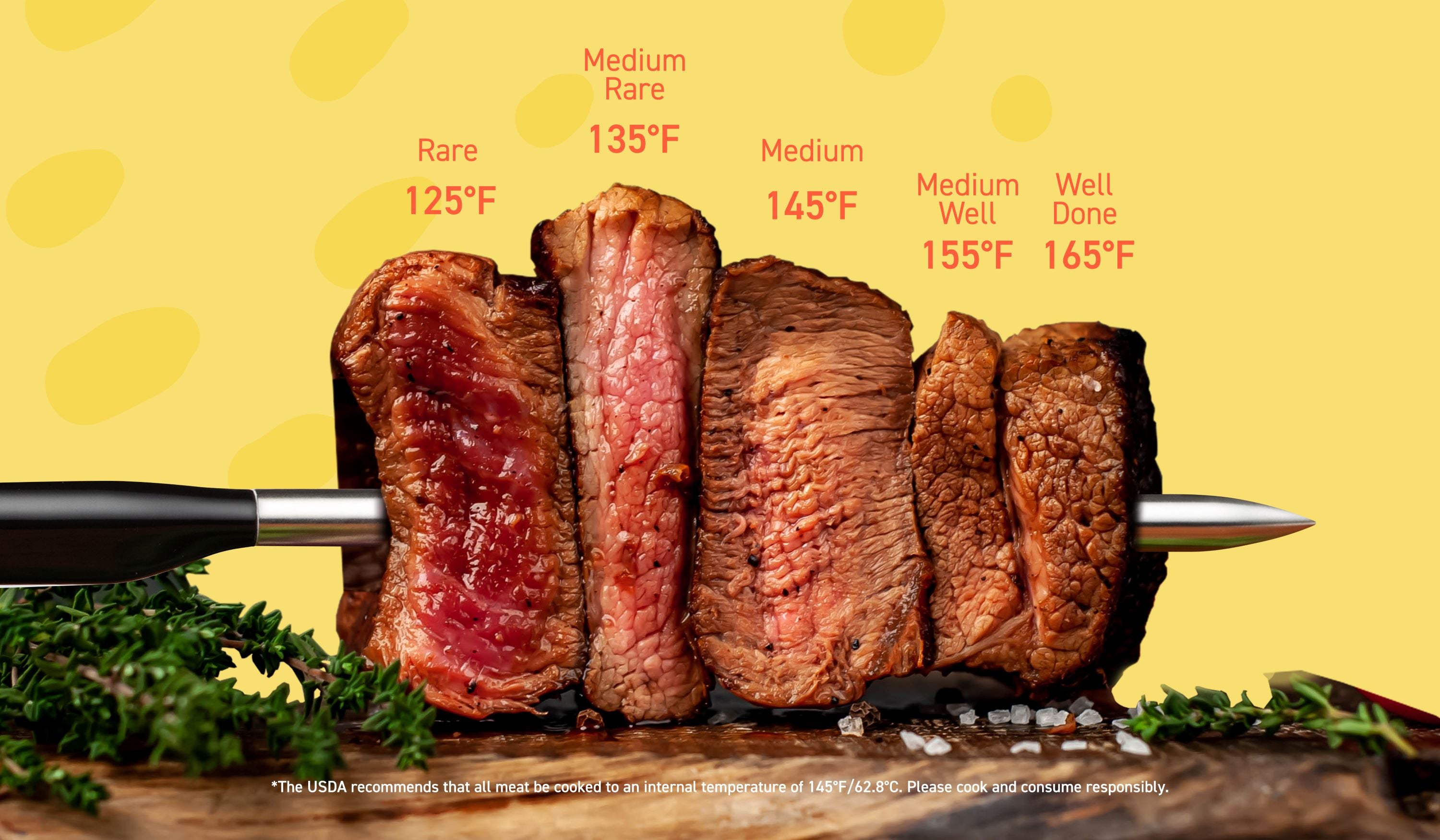
Factors Affecting Cooking Time
Understanding the factors that influence cooking time is crucial for achieving the perfect steak doneness. When cooking steak, several elements come into play that can impact how quickly or slowly your meat cooks.
1. Thickness of the Steak
One of the most significant determinants of cooking time is the thickness of the steak. Thicker cuts require more time to cook through, while thinner cuts can cook quickly. For instance, a steak that is 1 inch thick may take approximately:
- Thick Steaks (1.5 inches or more): 8 to 10 minutes at 450°F (232°C) after searing.
- Thinner Steaks (1 inch or less): 6 to 8 minutes under the broiler, flipping halfway through.
2. Desired Doneness
Your preferred level of doneness will affect how long you cook the steak. Here’s a handy reference:
- Rare: 125°F (52°C)
- Medium Rare: 135°F (57°C)
- Medium: 145°F (63°C)
- Medium Well: 150°F (66°C)
- Well Done: 155°F+ (68°C)
Adjust your cooking times based on these internal temperatures to achieve the desired doneness.
3. Cooking Method
Whether you’re broiling, roasting, or grilling, the cooking method also plays a role in timing. For example, broiling cooks with intense heat from above, allowing for quicker cooking times, while roasting involves even heat around the meat, leading to more gradual cooking.
In my experience, experimenting with these variables can be rewarding. The first time I roasted a thick ribeye, I learned firsthand that paying attention to thickness truly matters, as it went from perfectly golden to just a tad overcooked because I got impatient. So take your time, and enjoy the cooking journey!
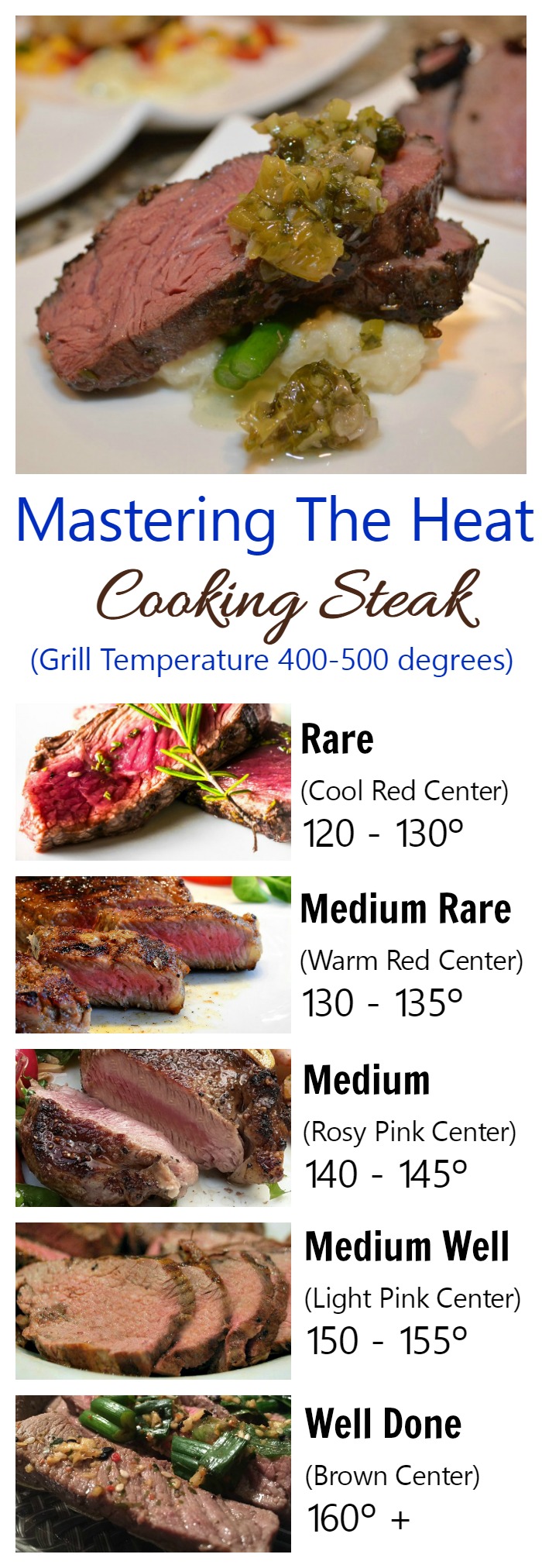
Cooking Times for Different Doneness Levels
Once you have an understanding of the factors affecting cooking time, it’s essential to pinpoint the specific cooking times for various doneness levels. For many home cooks, achieving the ideal doneness can be the make-or-break moment of steak preparation.
General Cooking Times
Here’s a straightforward guide for cooking a 1-inch thick steak. After searing, you’ll want to finish cooking it in the oven. Timing is crucial, so let’s break it down:
- Medium-Rare (125°F): Cook for 5 to 7 minutes in the oven. This doneness is achieved when the center of the steak remains warm and red, making it juicy and tender.
- Medium (135°F): Aim for 7 to 9 minutes. A medium steak has a pink center, retaining moisture while providing a firmer bite.
- Medium-Well (145°F): Allow for 10 to 12 minutes. At this stage, the steak will appear mostly cooked through, with just a hint of pink, making it a safer choice for those who prefer less red meat.
Consider More Thickness
For thicker cuts of steak, the cooking times adjust slightly:
- 1.5-inch thick steaks: Cook for about 8 to 10 minutes for medium-rare, 10 to 12 minutes for medium, and 12 to 14 minutes for medium-well.
Personally, I remember the first time I tried cooking a steak—following these guidelines made a world of difference. Using a meat thermometer to check for doneness saved me from the anxiety of cutting into my beautiful steak too soon or too late. With practice, these times and temperatures can guide you to a perfectly cooked steak every time.
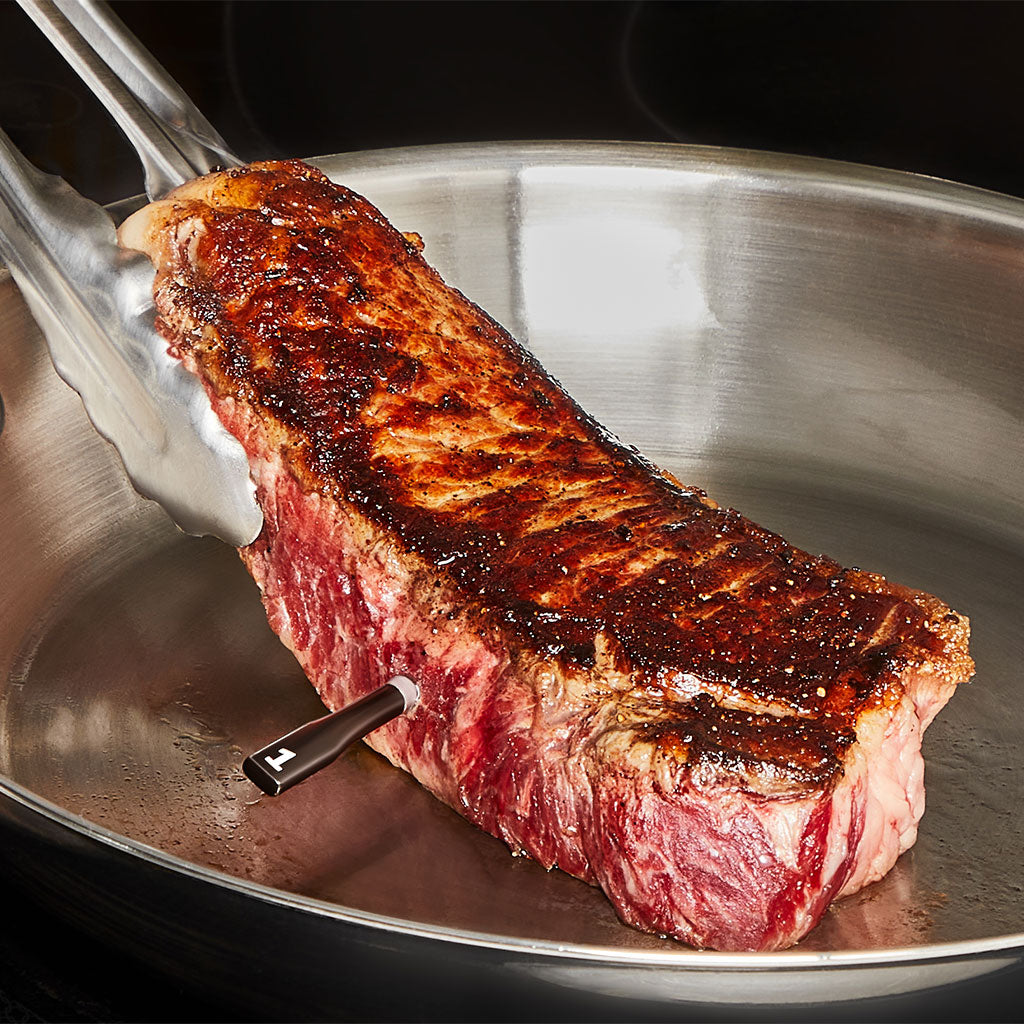
Tips for Perfectly Cooked Steak
Now that you have a solid grasp of cooking times for different doneness levels, let’s dive into a few essential tips that can make the difference between a good steak and a phenomenal one.
1. Bring the Steak to Room Temperature
Before you begin cooking, allow your steak to rest at room temperature for 30 to 45 minutes. This step is crucial, as it promotes even cooking throughout the meat. The last thing you want is a cold center, which can result in uneven doneness!
2. Sear Before Baking
Don’t skip the searing step! Using a hot skillet to sear the steak’s exterior generates the Maillard reaction, creating that delicious crust that enhances flavor and texture. Aim for a good sear of about one minute on each side before transferring it to the oven.
3. Use a Meat Thermometer
To achieve the perfect doneness, invest in a reliable meat thermometer. Insert it into the thickest part of the steak, and monitor these temperatures:
- Medium-Rare: 130°F
- Medium: 135°F
- Medium-Well: 145°F
I vividly remember the first time I used the thermometer; it took all the guesswork out of the cooking process. This simple tool makes it so easy to avoid overcooking your prized cut!
4. Rest Post-Cooking
After removing your steak from the oven, let it rest for at least 5 minutes. This allows the juices to redistribute, ensuring each bite is flavorful and juicy. Don’t be too eager—good things come to those who wait!
With these tips in mind, you’ll be well on your way to mastering the art of cooking steak perfectly each time. Happy cooking!
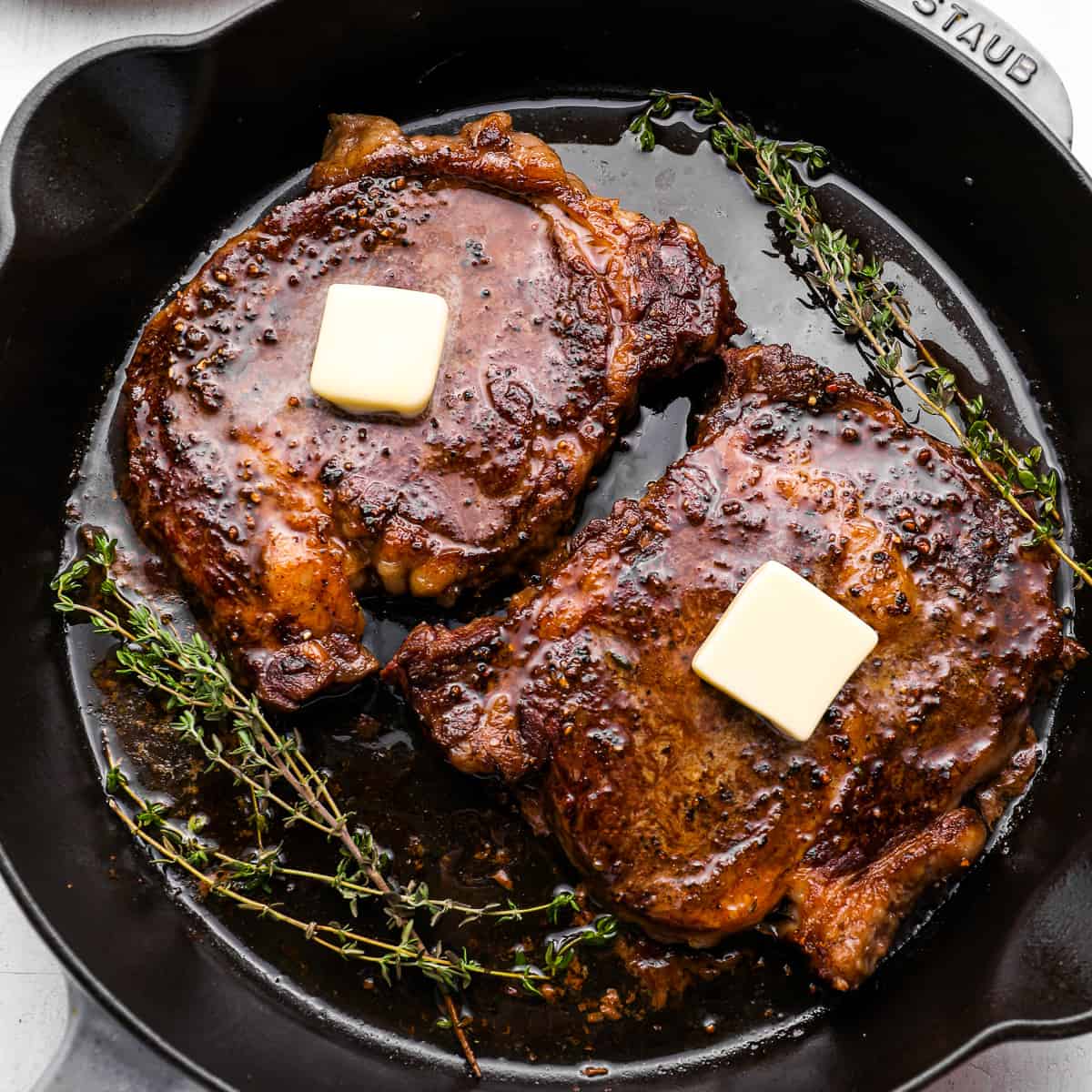
Recipe Ideas for Steak Lovers
Now that you’re equipped with tips for perfectly cooked steak, let’s dive into some mouthwatering recipe ideas that take your steak game to the next level. These dishes can enhance your steak experience, making each bite unforgettable.
1. Garlic Butter Steak
One of the simplest yet most luxurious ways to elevate your steak is by using garlic butter. After searing your steak, add a couple of tablespoons of unsalted butter along with smashed garlic cloves to the pan. As it melts, baste the steak continuously for about a minute. This not only adds a rich flavor but creates a beautiful, glossy finish.
2. Herb-Crusted Steak
If you love freshness, an herb-crusted steak is perfect. Combine chopped parsley, rosemary, and thyme with olive oil, salt, and pepper to create a paste. Rub this mixture onto your steak before cooking. The vibrant herbs will impart a delicious aroma and flavor, making your classic steak feel gourmet.
3. Steak Fajitas
For a fun twist, consider turning your steak into fajitas. Slice your cooked steak into strips and serve with sautéed onions and bell peppers. Wrap them in warm tortillas, and top with avocado slices and fresh salsa. It’s a delightful way to enjoy steak in a different context!
4. Steak Salad
Another option is a hearty steak salad. After cooking, slice your steak and serve it over a bed of mixed greens, cherry tomatoes, and blue cheese. Drizzle with balsamic vinaigrette for a refreshing and satisfying meal.
These ideas are just a starting point, but each one promises to bring joy and flavor to your dining table. Remember, sharing your delicious steak creations with family and friends makes the experience even more enjoyable!

Pairing Steak with Sides and Sauces
Once you’ve mastered cooking the perfect steak, it’s time to elevate your meal even further with delicious sides and sauces. The right accompaniments not only enhance the steak but also create a balanced and satisfying dining experience.
1. Classic Sides for Steak
When it comes to sides, a few classics never fail to impress:
- Garlic Mashed Potatoes: Creamy and buttery, these are the ultimate comfort food. Adding roasted garlic elevates the flavor profile and pairs beautifully with steak.
- Grilled Asparagus: Lightly seasoned and charred, asparagus offers a slightly bitter counterpoint that complements the richness of the steak.
- Sautéed Mushrooms: Cook them in butter and herbs for an earthy flavor that matches nicely with the meat.
- Caesar Salad: Crisp romaine lettuce topped with creamy dressing and croutons provides a refreshing contrast to the savory steak.
2. Sauces to Enhance Flavor
A great sauce can take your steak to the next level. Here are some favorites:
- Chimichurri: This Argentine sauce made from parsley, garlic, vinegar, and olive oil brings a fresh, herby kick that pairs exceptionally well with red meat.
- Red Wine Reduction: Simmer red wine with shallots and herbs until reduced to a flavorful sauce. This rich sauce complements the steak’s natural flavors beautifully.
- Peppercorn Sauce: A creamy blend of crushed peppercorns and heavy cream provides a spicy note that contrasts wonderfully with tender steak.
I recall a dinner party where I served steak with chimichurri and grilled asparagus. The vibrant colors and flavors wowed my guests and transformed a simple meal into something special. So whether you opt for classic sides or creative sauces, remember that the right combination can turn your steak dinner into a memorable feast!
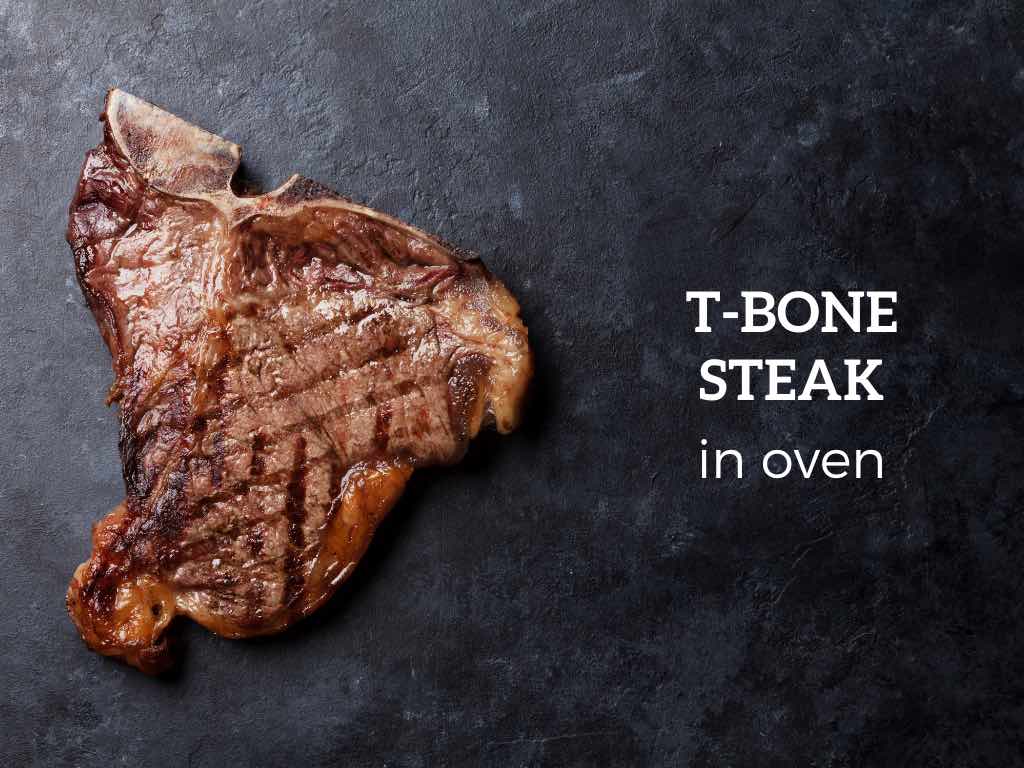
Conclusion
In conclusion, preparing a perfectly cooked steak is an art that combines understanding, technique, and a bit of passion. As we explored throughout this guide, mastering the skillet-to-oven method not only simplifies the cooking process but also guarantees that delicious and juicy results, every time.
The Journey to Steak Perfection
From selecting the right cut to seasoning and cooking techniques, each step plays a fundamental role in achieving that steakhouse-quality flavor. Here are key takeaways to carry forward:
- Room Temperature: Always allow your steak to reach room temperature before cooking for even results.
- Searing: A good sear creates the flavorful crust that makes steak irresistible, so don’t skip this step.
- Oven Cooking: Utilizing the oven for finishing touches provides precise control, allowing you to reach your desired doneness effortlessly.
- Resting: After cooking, let your steak rest to ensure the juices redistribute, making every bite tender and juicy.
I fondly remember the first time I cooked steak confidently—using everything I’d learned from guides like this one. The compliments from family and friends were incredibly rewarding, and I realized that with a bit of practice, anyone can become a steak aficionado.
As you embark on your next culinary adventure, don’t forget to experiment with sides and sauces that enhance your meal. Embrace the process, savor every bite, and most of all, enjoy cooking! Happy cooking!

Leave a Reply